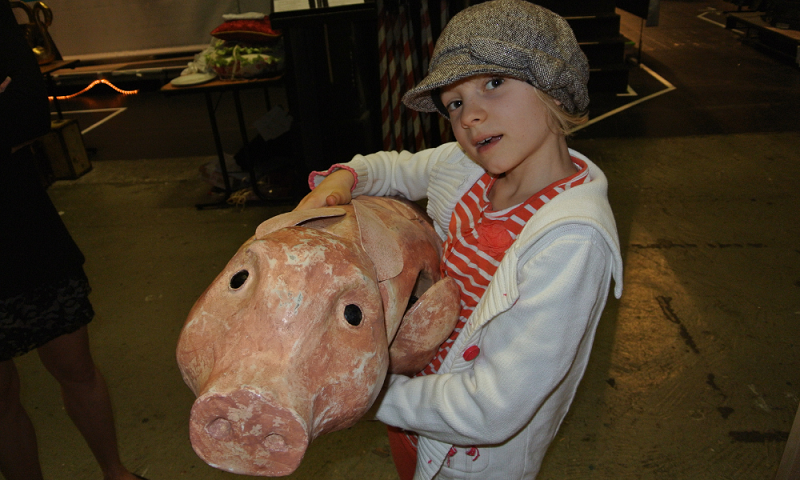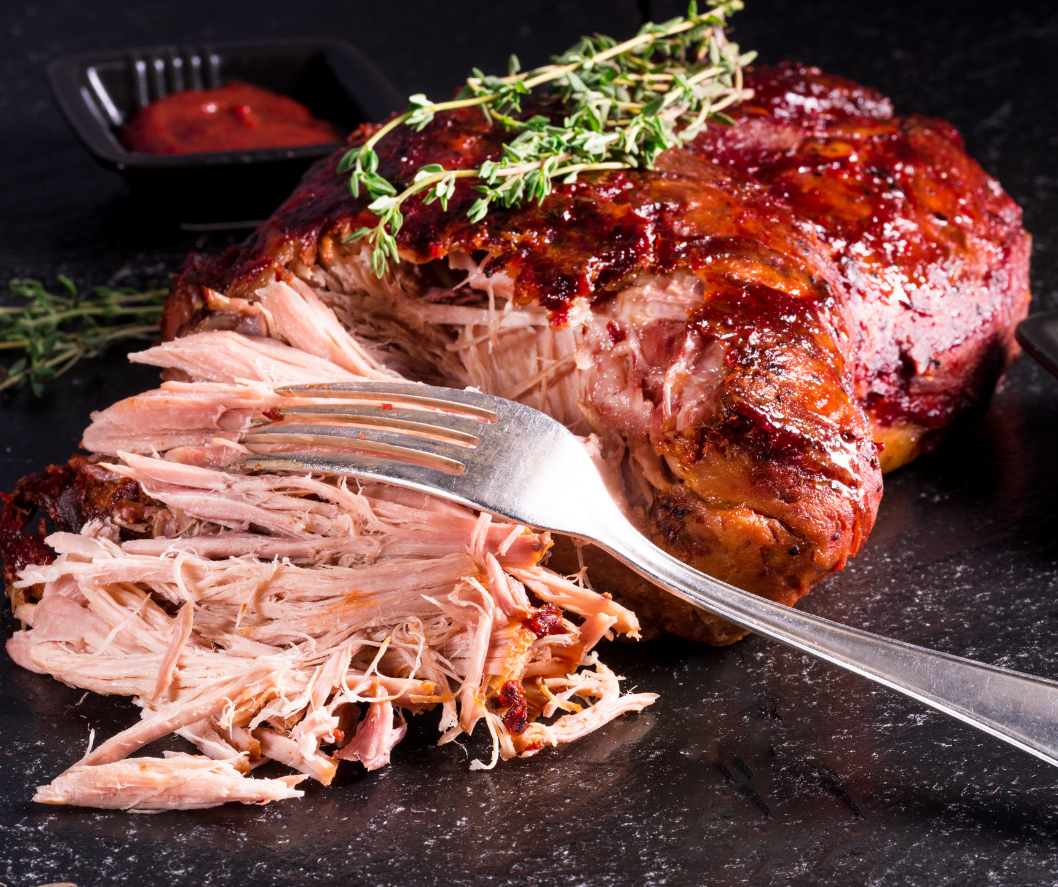
-
Canada raises about 14 million hogs on ~7,000 farms, with most herds clustered in Quebec, Ontario, and Manitoba.
-
In a typical year, inspected plants turn out ~2.34 million tonnes of pork, from ~21.3 million hogs—enough roasts, ribs, and chops to fill Sunday tables from coast to coast.
-
We don’t just eat Canadian pork—we share it with the world: roughly 1.45 million tonnes of pork worth $5.48 billion head abroad, plus 6.77 million live hogs (many as weanlings).
-
Canada’s pork sector is an economic workhorse—tens of thousands of jobs and billions to GDP—quietly powering the meals we make at home.
-
African swine fever (ASF)—devastating elsewhere—has never been detected in Canada, and it’s a reportable disease here. Vigilance keeps those holiday hams and weekday stir-fries safe.
-
Pork is a made-in-Canada export story: analysts note we ship over a million tonnes of pork products globally in an average year—Canadian chops with a passport.
From Richmond night markets in BC to Spadina in Toronto, bao buns feel right at home in Canada’s mosaic — soft, cloud-light pockets you stuff at the table and pass around family-style. This version gives you a reliable bun dough plus simple toppings that nod to our East-meets-West pantry.
Dim sum favourite meets Canadian weekend tradition — shared steamer baskets, lots of chatter, and a tray of open-faced sui mai. From Vancouver’s Richmond night markets to Toronto’s Chinatown, these little bites fit right into our multicultural table.
Snow on the sidewalk, steam on the glass—ramen feels made for our winters. A deep, savoury broth, slices of tender pork, and a jammy egg turn a simple bowl into a small celebration. This version follows time-tested ramen principles—broth + tare (seasoning) + aroma oil—so every slurp lands just right.
When the weather turns stubborn—rain on the windows or soft snow piling up—we gather at the table with a stack of wrappers and a bowl of filling. Someone mixes, someone fills, someone pinches the corners into little boats. A tray fills, the kitchen warms, and soon there’s a pot or skillet hissing away. These dumplings are humble, hands-on, and perfect for batch cooking—they freeze beautifully for the next stormy night.
A backyard-and-skillet classic: peppers and onions sizzling, tortillas warming, and a platter of marinated chicken, steak, or pork so everyone can build their own. It’s weeknight-friendly, cottage-worthy, and perfect for feeding a crowd after a long day outside.
A fast, cozy bowl for cold nights: good chicken stock brought to a simmer, dumplings slipped in, bok choi for fresh crunch, and a spoon of jarred chilli to wake everything up. It’s pantry-simple, weeknight-quick, and exactly the kind of comfort that gathers everyone to the table.
A true weeknight classic—leftover rice from yesterday, a handful of frozen peas, and a bit of Sunday ham become a hot, savoury bowl in minutes. It’s the kind of skillet supper that fits Canadian kitchens: practical, fast, and perfect after hockey practice or a cold walk home.
Paella, the way we make it here, feels like humble food with a big heart—rice taking on the flavours of what’s at hand, a little chorizo for warmth, peas for sweetness, and chicken crisped in the oven so everyone gets a crackly piece. It’s the kind of pan you set in the middle of the table after a long day—boots by the door, stories starting—proof that simple ingredients, cooked with care, can gather a room and feed it well.
Comfort-food classic with a Canadian wink, sausage and mash went from pub fare to weeknight staple here—think Yukon Gold potatoes, prairie-style grainy mustard, and good butcher’s sausages sizzling in a skillet. Piled high with creamy mash and a glossy onion gravy, it’s cabin-cozy, city-friendly, and perfect for cold nights.
Rustic, hearty, and deeply flavourful, country pâté is a celebration of humble ingredients elevated with care. A mix of pork, chicken livers, herbs, and spices, it’s pressed and chilled into a loaf, then sliced and shared. Its roots are French, but in Canada it became especially tied to Québec, where charcuterie and rustic cooking were woven into daily life. Served with mustard, pickles, or crusty bread, this pâté carries the spirit of gathering — simple food that feels celebratory.
Navy beans were a staple ration for sailors in the Royal Canadian Navy, and today they’re grown widely in Ontario. This dip blends old-world chorizo with a Canadian staple, giving you layers of smoky, creamy, and spicy flavours in one easy dish. It’s the kind of recipe you’ll bring out at a party and find the jar scraped clean.
Crispy, golden, and comforting, tonkatsu is a Japanese favourite that has found a home in Canada, especially on the West Coast where Japanese food culture thrives. From restaurants in Vancouver’s Little Tokyo to family kitchens across the country, tonkatsu shows how Japanese flavours have blended seamlessly into Canadian dining. Served with crunchy cabbage, rice, and tangy sauce, it’s simple, balanced, and always satisfying.
Sausages, potatoes, and greens — a trio that’s as comforting as it is timeless. In Canada, this dish reflects both resourcefulness and heritage: backyard gardens supplying greens like chard, hearty potatoes pulled from Prairie or PEI fields, and sausages tied to immigrant traditions. Italian and Portuguese families especially made chard a staple, planting it in abundance and weaving it into simple, satisfying suppers. This plate brings those influences together — rustic, nourishing, and unmistakably Canadian in spirit.
This dish may draw from rustic European kitchens, but it feels deeply Canadian in spirit. Pork, aubergine, and sweet potatoes are staples of farm and family tables across the country — humble ingredients elevated with fresh herbs and simple cooking. Pounding the pork thin keeps it tender and quick to cook, while roasted vegetables and a spoonful of yogurt add warmth and freshness. It’s the kind of dish that belongs just as easily at a Prairie farmhouse table as at a weeknight dinner in the city.
Pulled pork may have Southern roots, but it has found a true home in Canada. From backyard barbecues and hockey nights to rib festivals that fill Ontario and Alberta towns with smoke and music, slow-cooked pork has become a dish of celebration. Sweetened with maple, simmered in local barbecue sauces, and stretched to feed a crowd, it captures the Canadian way of cooking: resourceful, hearty, and built around gathering.
This dish speaks to both resilience and flavour — a humble, hearty meal with roots in Spanish cooking that feels right at home in Canadian kitchens. Immigrant traditions brought smoky chorizo to Canada, where it mingled with Prairie potatoes and backyard greens. Crowned with a fried or poached egg, it’s the kind of dish that proves simple ingredients can still feel rich, comforting, and complete.
Crispy schnitzel, buttery spätzle, and sweet-sour braised red cabbage are the essence of Central European comfort food. In Canada, these traditions arrived with waves of German, Austrian, and Eastern European immigrants, who brought their hearty dishes to Prairie towns and farming communities. With pork, apples, and cabbage plentiful, schnitzel dinners became Sunday staples, later celebrated at Oktoberfest events in places like Kitchener-Waterloo — now one of the largest Oktoberfests outside Germany. This dish reflects how Old World recipes adapted to Canadian abundance, becoming part of our own food story.
Stuffed peppers are a dish that has travelled across continents — from Eastern European kitchens to Mexican taquerías — and found a welcome home in Canada. Immigrant families brought their own versions, often filled with rice and pork, and over time, Canadian kitchens adapted them with local abundance. Bell peppers, now a staple of Prairie gardens and Ontario greenhouses, meet Mexican flavours of cumin, chili, beans, and corn to create a dish that feels both global and deeply Canadian. Colourful, hearty, and endlessly adaptable, these peppers are as fitting at a backyard barbecue as they are on a weeknight family table.
There’s something magical about making pasta from scratch — the feel of the dough under your hands, the rhythm of rolling, and the joy of sealing each little pillow of filling. This version, with sausage, ricotta, and spinach, has the heart of Italian tradition but feels perfectly Canadian when made with artisan ricotta and market-fresh greens. In Toronto’s Little Italy or Montreal’s Jean-Talon Market, dishes like this became part of Canada’s food story, bridging family kitchens and community tables with a sense of both heritage and home.
Tacos are about gathering, sharing, and packing bold flavour into small bites. In Canada, they’ve taken on their own identity — filled with West Coast salmon or halibut, Prairie beef or bison, and East Coast shrimp or lobster. Whether piled with chicken and crisp cabbage, smoky pulled pork and pickled onions, or fish topped with mango salsa, tacos feel just as at home at a Canadian barbecue as they do on a beachside street in Mexico
This isn’t just any BLT — it’s Canadian through and through. Peameal bacon, often called “Toronto’s signature dish,” is lean pork loin rolled in cornmeal and fried until golden. A legend at St. Lawrence Market since the late 1800s, it remains a proud local favourite. Layered with lettuce and ripe tomatoes, this BLT takes a familiar classic and gives it a distinctly Canadian identity.





















